6.1: A Tour of the Sun and the Planets
( \newcommand{\kernel}{\mathrm{null}\,}\)
At the heart of the solar is the Sun, which contains over 99.9% of the solar system’s mass. Though the Sun dominates our solar system, compared to many other stars in our galaxy, the Sun is rather small, a yellow dwarf among blue-white giants. The Sun is made mostly of hydrogen and helium in the form of ionized gas or plasma. Each second, as it fuses hydrogen into helium, the Sun converts over 4 million tons of its mass into energy.
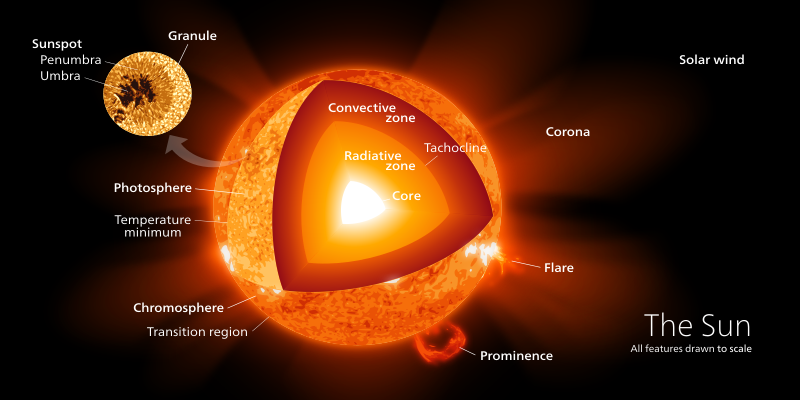 The Sun and its interior.
The Sun and its interior.
Tiny Mercury orbits closest to the Sun. The smallest of the eight planets, Mercury nonetheless has the largest core relative to its size. Mercury is also the most metallic of the Terrestrial planets. Billions of years ago, Mercury suffered numerous impacts from asteroids, giving it a heavily cratered surface like that of our Moon. Because it lacks a significant atmosphere, Mercury has a huge range in surface temperature, heating up from 425ºC during the day and then dropping to –150ºC at night.
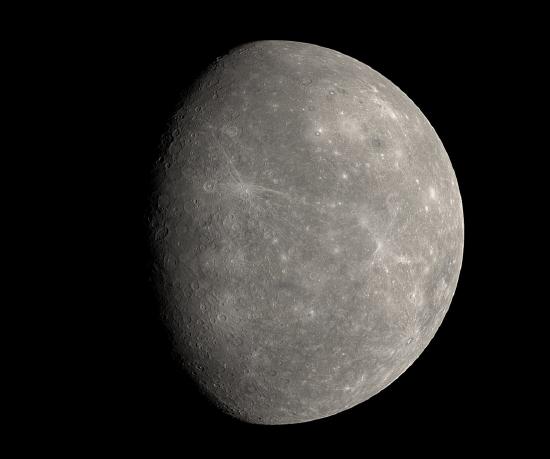 Mercury.
Mercury.
https:/www.flickr.com/photos/ugordan/2231456684;
Second in orbit from the Sun, Venus initially appears to the most Earth-like planet in the solar system, being almost the same size and mass as the Earth. Its surface, though, remained hidden under a thick cloud layer giving it a high reflectivity, making it the third brightest object in our sky after the Sun and Moon. Despite its Earth-like size, however, Venus has a much different. With a super- dense atmosphere, the pressures on the surface of Venus are ninety times the atmospheric pressure at sea level on Earth. Its monstrously think atmosphere mostly contains carbon dioxide, giving it a runaway greenhouse effect, producing surface temperature high enough to melt lead. To make matters worse, it rains sulfuric acid. Named after the Roman goddess of love and beauty, Venus comes closest to our conception of Hell.
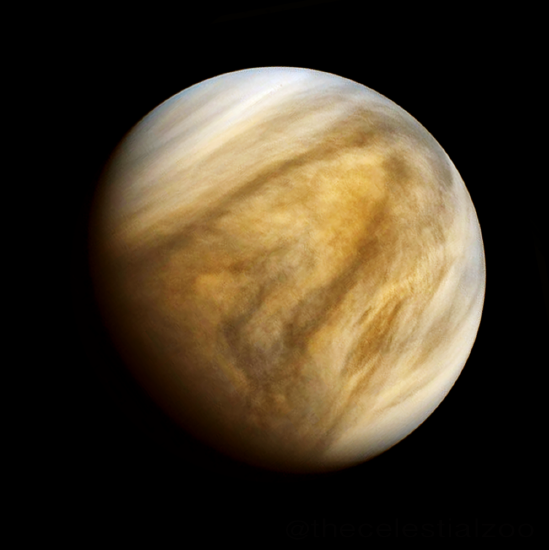 Venus.
Venus.
Third from the Sun is our own world. The Earth is often called the “Goldilocks planet.” Not too hot and not too cold, the Earth serves as an oasis of life. Of the Terrestrial planet, only the Earth has the right conditions for liquid water on its surface. The oceans cover about seventy percent of Earth’s surface and the planet’s poles are topped with ice caps. Earth also has the strongest magnetic field of the Terrestrial planets and has a unique atmosphere consisting mostly of nitrogen and oxygen. The Earth’s most unique feature, however, may be its moon. No other planet has such a large moon in relation to its size.
 The four planets of the inner Solar System: Mercury, Venus, Earth, and Mar.
The four planets of the inner Solar System: Mercury, Venus, Earth, and Mar.
https:/www.pikist.com/free-photo-vohwg;
Mars, the red planet, may also appear Earth-like, however, it is a cold desert with an atmosphere too thin for liquid water to exist on the surface. Any water released onto its surface with either freeze or vaporize. A planet of extremes, Mars has the longest canyon and the tallest volcano in the solar system. Scientists have found evidence that Mars looked much different early in its history, when its atmosphere was thicker, liquid water may have flowed on its surface. This raises the question, could life have existed on Mars in the distant past.
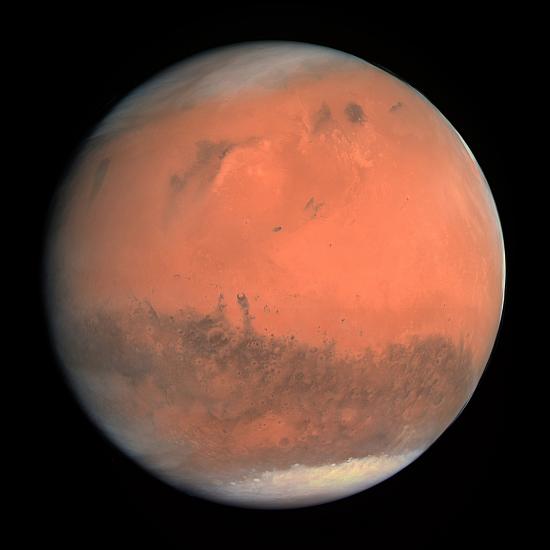 Mars.
Mars.
https:/commons.wikimedia.org/wiki/File:OSIRIS_Mars_true_color.jpg;
After Mars, we leave the Terrestrial planets behind and meet the largest of the Jovian worlds, Jupiter. Named after the king of the Roman gods, Jupiter is truly the king of the planets. Made mostly of hydrogen and helium and 300 times as massive as the Earth, Jupiter has numerous moons and several faint rings. The Galilean moons, named after their discoverer, Galileo, are the four largest of Jupiter’s moons and each is a fascinating world its own right:
1. Io: the volcanically active body in the solar system
2. Europa: An ice ball that may have an ocean of liquid water beneath its surface.
3. Ganymede: The larges moon in the solar system.
4. Callisto: A big, cratered slush ball.
.jpg?revision=1&size=bestfit&width=833&height=530) Jupiter and the Four Galilean Moons.
Jupiter and the Four Galilean Moons.
https:/commons.wikimedia.org/wiki/File:Galilean_Moons_Infographic_(16459663809).jpg;
People recognized Saturn instantly because of its brilliant ring system. Made of up particles of ice and rock, Saturn’s rings orbit a planet a little smaller but similar in composition to Jupiter. Like Jupiter, Saturn has numerous moons, including Titan, the only moon with a thick atmosphere. Beneath Titan’s hazy atmosphere lie lakes of liquid methane and cryovolcanoes, volcanoes that would freeze your hand if you stuck it into their flow.
.png?revision=1&size=bestfit&width=802&height=438) Saturn.
Saturn.
Passing Saturn, we leave behind all the planets known to the ancient people and that are visible to the naked. Astronomers only discovered the final two planets in relatively modern times. Uranus has the most extreme axial tilt of more than ninety degrees. It rolls along its orbit like a ball rolling around an ice rink. Like Jupiter and Saturn, Uranus contains mostly hydrogen and helium, but it also contains hydrogen compounds like methane, ammonia, and water. Astronomers call these compounds “ices” and sometimes refer to Uranus and Neptune “ice giants” to differentiate them from the larger gas giants, Jupiter and Saturn.
Other than its axial tilt, Neptune appears like Uranus in many ways. Both Uranus and Neptune have faint systems and numerous moons, the largest of which is Neptune’s Triton.
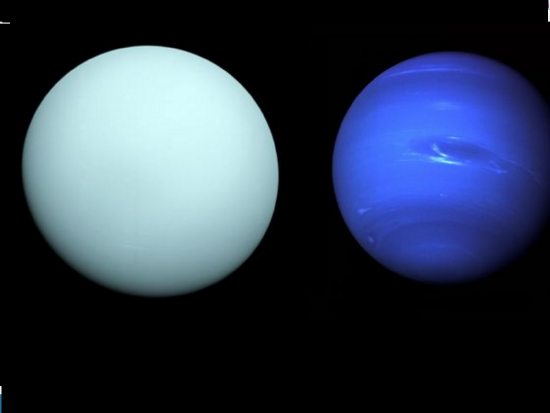 Uranus and Neptune.
Uranus and Neptune.
Neptune marks the end of our known planets, but it is not the end of our solar system. Beyond Neptune orbits tiny Pluto and its five moons. Once classified as a planet, this ball of ice and frozen nitrogen received a demotion when astronomers discover that it did not orbit the Sun alone. Today, we know Pluto is one of numerous objects orbiting the Kuiper Belt. In 2006, astronomers reclassified Pluto as a dwarf planet. Other bodies they have labeled dwarf planets include fellow Kuiper belt objects with names like Makemake, Haumea, and Eris, as well as the asteroid Ceres.
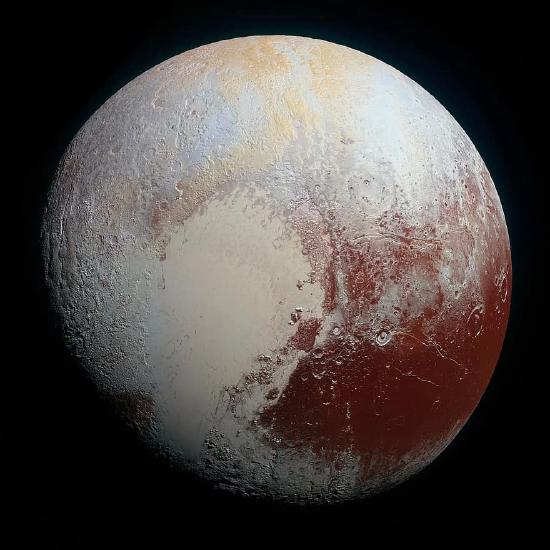 Pluto.
Pluto.
https:/www.pikist.com/free-photo-sqvvj;
 Dwarf Planet Candidates.
Dwarf Planet Candidates.
https:/commons.wikimedia.org/wiki/File:Dwarf_planet_candidates.jpg;


